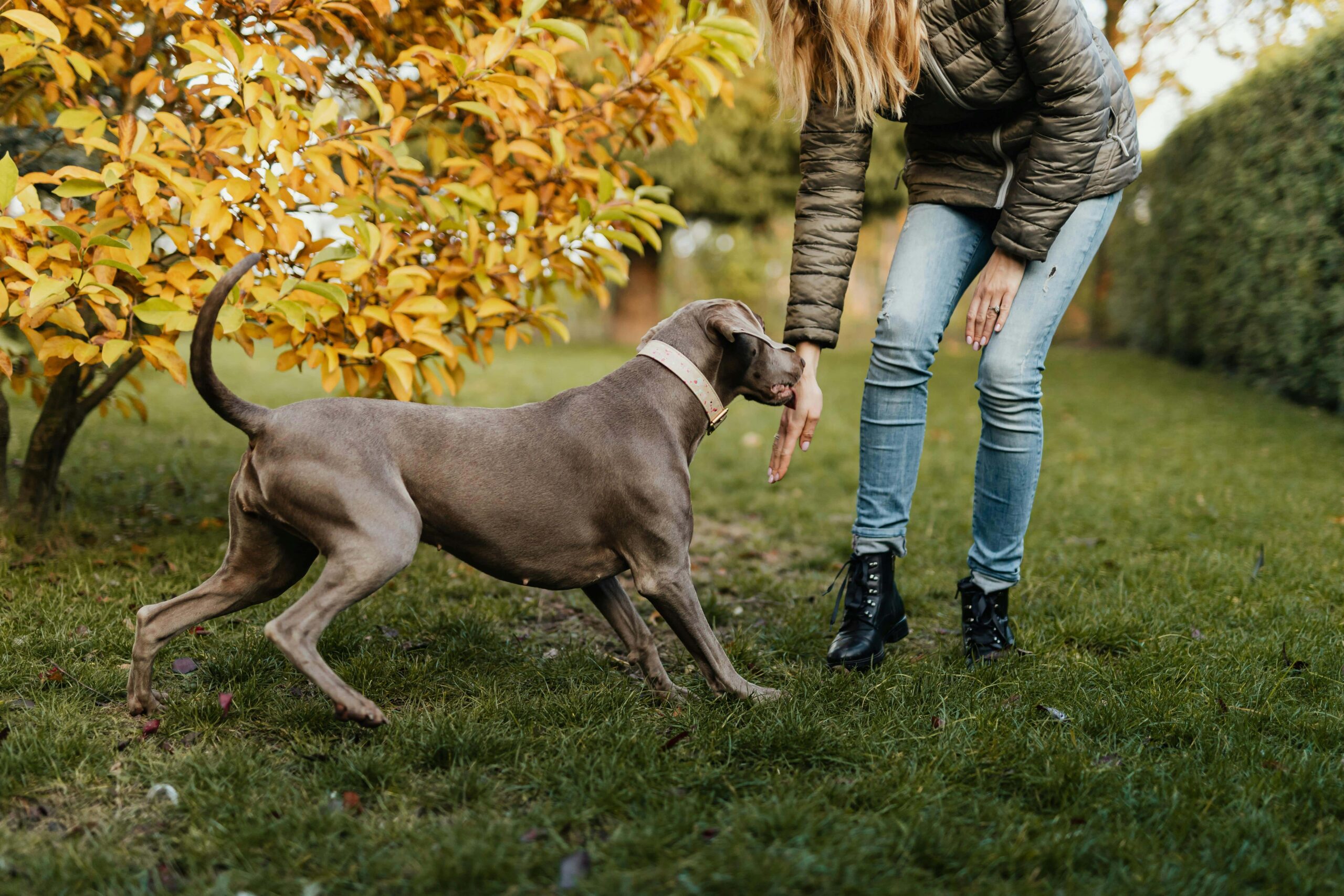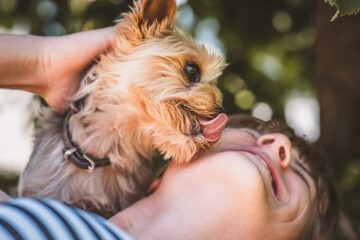We all adore the attention our dogs seek, but sometimes their way of asking involves nipping.
If you’re wondering the question of how to stop dog nipping for attention, fear not!
This comprehensive guide is your go-to resource, offering a collection of practical tips and strategies to help you navigate and overcome this attention-seeking behavior.
With a dash of patience, a sprinkle of positive reinforcement, and a pinch of understanding, you can guide your furry friend towards more desirable habits, fostering a deeper connection and a more peaceful coexistence.
Let’s embark on this journey together, unraveling the secrets to curbing the nipping and cultivating a well-mannered and attention-savvy canine companion.
Table of Contents
How to Stop Dog Nipping for Attention: Gentle Guidance

1] Understanding Canine Communication
Immersing yourself in the nuances of canine communication is fundamental for addressing nipping behavior.
Dogs may resort to nipping for various reasons, such as excitement, playfulness, or a desire for interaction.
The key lies in recognizing the subtle cues that precede nipping.
Pay close attention to your dog’s body language, including signs like heightened arousal, raised hackles, or intense eye contact.
By proactively identifying these triggers, you can take preemptive measures to redirect their behavior positively.
2] Positive Reinforcement
Harness the effectiveness of positive reinforcement in your training regimen.
When your dog exhibits calm and gentle behavior, promptly reward them with treats, praise, or affection.
This association reinforces the idea that gentle actions lead to enjoyable attention and treats.
Positive reinforcement serves as a powerful motivator, encouraging your dog to repeat behaviors that result in positive outcomes.
Tip: “Reward moments of gentle actions with treats, praise, or affection to reinforce positive associations.”
3] Interactive Play
Interactive play serves as a valuable tool to redirect your dog’s energy in a positive direction.
Engage in regular play sessions using toys that encourage gentle interaction.
Choose items like soft tug toys or plush balls, minimizing the likelihood of nipping for attention.
Interactive play not only expends excess energy but also strengthens the bond between you and your furry friend, fostering a positive and mutually enjoyable relationship.
4] Teach Commands
Training your dog in basic commands provides a constructive way to redirect their attention away from nipping.
Commands such as “sit,” “stay,” or “lie down” offer alternative behaviors that reinforce discipline and obedience.
When your dog starts to exhibit attention-seeking nipping, redirect their focus by incorporating these commands.
This not only establishes a clear communication channel but also promotes a more structured and positive interaction.
In the orchestra of commands, attention-seeking nipping takes a backseat to disciplined interaction.
5] Time-Outs
Introducing short time-outs as a consequence for nipping behavior helps reinforce boundaries.
If your dog resorts to nipping for attention, calmly and gently remove yourself from the interaction for a brief period.
This temporary withdrawal communicates that nipping leads to a pause in positive attention, encouraging your dog to seek more desirable forms of interaction.
Consistency in applying time-outs enhances the learning process.
6] Consistent Reactions
Consistency is a cornerstone when addressing nipping behavior.
Establish predictable reactions to nipping, whether it’s a gentle “no” or redirecting attention to an appropriate activity.
Consistent responses help your dog understand the consequences of their actions, creating a structured environment for learning.
Predictability reinforces the message that nipping is not an acceptable means of seeking attention.
• Consistency is crucial in addressing nipping behavior • Establish predictable reactions, like a gentle "no" or redirection • Helps your dog understand consequences, creating a structured learning environment • Reinforces that nipping is not an acceptable way to seek attention
7] Provide Chew Toys
Recognizing and satisfying your dog’s natural instinct to nip and chew is crucial.
Offer a variety of chew toys with different textures and materials.
When your dog feels the urge to nip for attention, redirect their focus to these toys.
This not only provides an acceptable outlet for nipping but also contributes to your dog’s dental health.
A well-stocked selection of chew toys keeps them engaged and content.
8] Physical Exercise
Ensuring your dog gets sufficient physical exercise is a fundamental aspect of preventing attention-seeking behaviors like nipping.
Regular walks, playtime, and activities tailored to your dog’s breed and energy level are essential.
A tired dog is less likely to engage in restless behaviors, making daily exercise an integral component of a well-rounded strategy for addressing nipping.
Tip: “Incorporate daily walks and playtime to minimize attention-seeking behaviors like nipping.”
9] Avoid Rough Play
While play is essential for a healthy bond, it’s crucial to set clear boundaries, especially regarding rough play that may encourage nipping.
Clearly communicate acceptable play behavior and discourage any actions that involve nipping for attention.
Consistent reinforcement of gentle play fosters a positive interaction style, minimizing the likelihood of nipping as a means of seeking attention.
10] Socialization Opportunities
Exposing your dog to positive socialization experiences with other dogs and people contributes to well-rounded behavior.
Healthy interactions in various settings help your dog understand appropriate behavior and reduce reliance on nipping for attention.
Positive socialization builds their confidence and reinforces positive communication, creating a more balanced and socially adept companion.
Tip: “Encourage healthy interactions to help your dog understand appropriate behavior, reducing reliance on nipping for attention.”
11] Comfortable Spaces
Designating comfortable spaces where your dog can retreat during calm moments is essential.
Providing a cozy bed or crate establishes a retreat for relaxation and positive behavior.
This space serves as a haven where your dog can unwind without resorting to nipping.
Ensuring the designated area is equipped with soft bedding and familiar items enhances the sense of security and comfort.
12] Seek Professional Guidance
If nipping behavior persists despite your efforts, seeking guidance from a canine behavior specialist is a prudent step.
These professionals possess the expertise to assess your dog’s unique needs and provide tailored strategies for effectively addressing attention-seeking nipping.
Their insights can uncover any underlying issues and offer a customized plan to reshape behavior positively.
Professional guidance ensures a holistic approach to resolving persistent nipping challenges.
In the consultation of specialists, the path to behavioral harmony is illuminated, and nipping becomes a challenge met with expertise
13] Patience and Affection
Above all, building a loving connection with your dog requires patience, understanding, and an abundance of affection.
Embrace the journey as a collaborative effort, recognizing that progress may occur gradually.
Celebrate even the smallest achievements in redirecting nipping behavior, reinforcing the positive bond between you and your furry friend.
Patience and affection create a nurturing environment for learning, ensuring a positive and lasting connection.
How to Stop Dog Nipping for Attention: FAQs
Can positive reinforcement alone stop nipping for attention?
While positive reinforcement is a powerful tool, a combination of strategies, including interactive play, consistent reactions, and providing chew toys, contributes to effective nipping prevention.
Are certain dog breeds more prone to nipping for attention?
Nipping behavior can vary among breeds, but training strategies remain essential regardless of breed. Consistent and positive training ensures a harmonious interaction with all dogs.
How long does it take to stop dog nipping for attention?
The duration varies, but with consistent efforts and positive reinforcement, you can witness positive changes within a few weeks. Patience is key to building lasting behavioral improvements.
Can adult dogs exhibit nipping for attention?
Yes, adult dogs may exhibit nipping behavior for attention. Training strategies can be applied effectively to dogs of all ages to curb attention-seeking nipping habits.

Conclusion:
Putting a stop to your dog’s nipping for attention is a journey that strengthens the bond between you and your canine companion.
By implementing the tips outlined in this guide on How to Stop Dog Nipping for Attention, you’ll find yourself on the path to a well-behaved and considerate pet.
Remember, consistency and positive reinforcement are key.
As you navigate through this process, celebrate the small victories, and relish the newfound understanding between you and your nipping-free dog.





